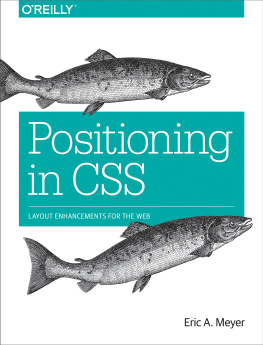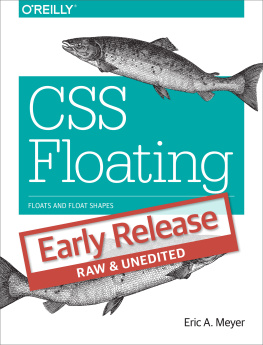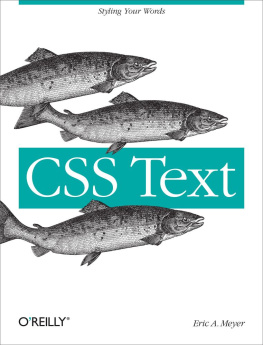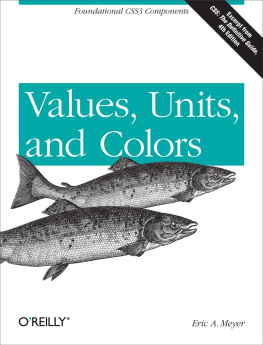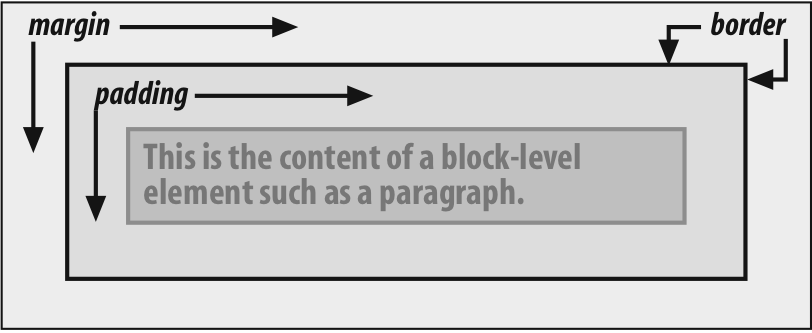Eric A. Meyer - Basic Visual Formatting in CSS: Layout Fundamentals in CSS
Here you can read online Eric A. Meyer - Basic Visual Formatting in CSS: Layout Fundamentals in CSS full text of the book (entire story) in english for free. Download pdf and epub, get meaning, cover and reviews about this ebook. year: 2015, publisher: OReilly Media, genre: Computer. Description of the work, (preface) as well as reviews are available. Best literature library LitArk.com created for fans of good reading and offers a wide selection of genres:
Romance novel
Science fiction
Adventure
Detective
Science
History
Home and family
Prose
Art
Politics
Computer
Non-fiction
Religion
Business
Children
Humor
Choose a favorite category and find really read worthwhile books. Enjoy immersion in the world of imagination, feel the emotions of the characters or learn something new for yourself, make an fascinating discovery.
- Book:Basic Visual Formatting in CSS: Layout Fundamentals in CSS
- Author:
- Publisher:OReilly Media
- Genre:
- Year:2015
- Rating:4 / 5
- Favourites:Add to favourites
- Your mark:
Basic Visual Formatting in CSS: Layout Fundamentals in CSS: summary, description and annotation
We offer to read an annotation, description, summary or preface (depends on what the author of the book "Basic Visual Formatting in CSS: Layout Fundamentals in CSS" wrote himself). If you haven't found the necessary information about the book — write in the comments, we will try to find it.
Some aspects of the CSS formatting model may seem counterintuitive at first, but as youll learn in this practical guide, the more you work with these features, the more they make sense. Author Eric Meyer gives you a good grounding in CSS visual rendering, from element box rules and concepts to the specifics of managing tricky layouts for block-level and inline elements.
Short and sweet, this book is an excerpt from the upcoming fourth edition of CSS: The Definitive Guide. When you purchase either the print or the ebook edition of Basic Visual Formatting in CSS, youll receive a discount on the entire Definitive Guide once its released. Why wait? Learn how to bring life to your web pages now.
- Learn the details of element box types, including block, inline, inline-block, list-item, and run-in boxes
- Change the type of box an element generates, from inline to block, or list-item to inline
- Dive into the complexities of horizontal and vertical block-box formatting
- Explore key concepts of inline layout: anonymous text, em box, content area, leading, inline box, and line box
- Understand formatting differences between nonreplaced and replaced inline elements
Eric A. Meyer: author's other books
Who wrote Basic Visual Formatting in CSS: Layout Fundamentals in CSS? Find out the surname, the name of the author of the book and a list of all author's works by series.


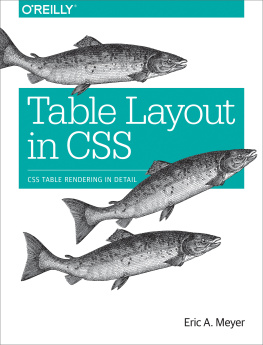

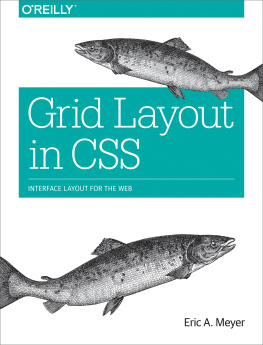
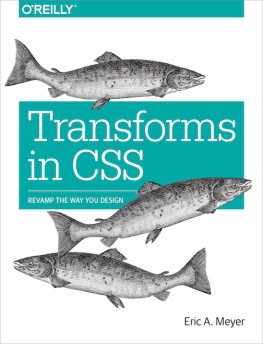
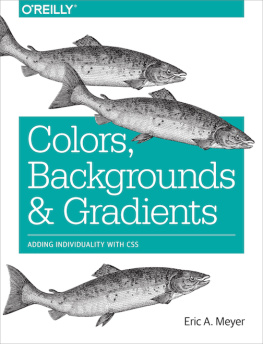
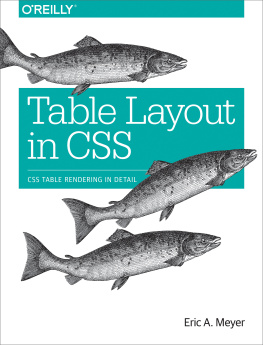
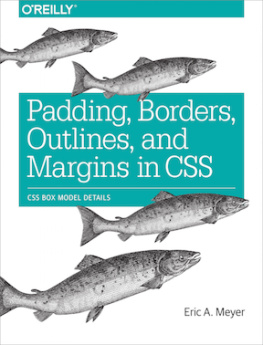

![Eric A. Meyer [Eric A. Meyer] - Padding, Borders, Outlines, and Margins in CSS: CSS Box Model Details](/uploads/posts/book/119142/thumbs/eric-a-meyer-eric-a-meyer-padding-borders.jpg)

